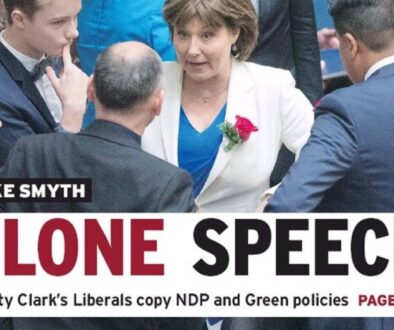Skype: Just because you can, doesn’t mean you should.
I love Fox News, but it is only available to me as a blurry unwatchable mess (i.e. standard definition channel.) [UPDATE: Fox News is now available to me in the full glory of HD.]
In actual #RealNews reality, I have always admired the production quality of Fox News—everything and everybody always looks great. Production values matter—even for news. Yet, panel segments on news channels routinely include guests appearing via Skype or other video chat service. For outlets, video chat offers lower costs and greater access to content. For the audience, internet video promises a wider range of views and better access to expert analysis. In practice, the adoption of video chat in TV newsrooms has become an excuse for diminished production standards—poorly lit and awkwardly framed video paired with the audio quality of a 70s speakerphone.
One of these isn’t the same. Recently, I was on a CTV Newsnet political panel. One of the guests participated via Skype; two of us went to a studio. Can you spot the Skyper?
If you guessed the guy with the least flattering angle and a signal that dropped out, you are right! While it wasn’t a particularly contentious panel, television is a visual medium. Looking bad doesn’t help to get the message across. Those of us participating via television studio had the advantage of appearing more professional, and by extension, more credible.
Four things to consider before agreeing to a media appearance via video chat:
- Say no. Insist on going into the studio instead—you will always look and sound better. Take advantage of the professional equipment and expertise available from the outlet.
- I have all the gear and I still say no. As an infrequent TV political commentator, I always insist on an in-studio appearance. Keep in mind. my office has an extensive A/V setup for media training that could easily facilitate a professional TV appearance. However, we lack producers and technicians to operate the board and lights and generally make sure that things work smoothly (see #1 or #3.)
- Go to a professional facility. If distance or circumstance prevent an in-studio appearance at the outlet, consider alternate studios. It is often possible to go to an affiliate or even an independent studio to conduct the interview in professional conditions.
- Invest in the medium. If you still plan on doing TV interviews via Skype, then invest accordingly. You can narrow the gap; but usually, you will still look worse than anyone in-studio. Some tips if you must:
- Be ready to pay. While there are many good video services with free subscriptions, usually you get what you pay for. If it is important, then pay for it.
- Shine a light. There are lots of cameras and microphones that will do the trick. But, a good lighting setup is often the difference between looking natural and looking tired. (Bonus tip: a standalone video encoder can really improve the quality of video stream that you upload.)
- Learn how to produce a professional looking video. The following links will help get you started:
- THERE ARE EXCEPTIONS: The above does not apply when the location is central to the story—a war zone, riot, or natural disaster. These are time-sensitive situations where bad light, awkward angles, and background noise all add tension and reinforce the difficulty of the newsgathering effort—the medium is the message.




